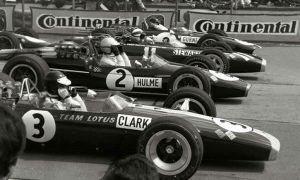The last couple of F1 Grands Prix saw teams and drivers race at two iconic and ultra-fast venues, with Spa-Francorchamps and Monza rounding up the European leg of the season. Here are the latest novelties that caught the eye of F1i technical expert Nicolas Carpentiers.
Less drag, more speed
A low-downforce rear wing reduces the car’s aerodynamic drag (i.e. its resistance to airflow) and thus results in an increase in top-end speed, which is a cardinal performance factor at Monza.
This is why F1 teams used low-drag rear wings in Italy, while also adjusting their front assemblies in order to balance the downforce between rear and front. While Spa already required a low-downforce setup, Monza’s configuration was even more unique. Squads usually bring several versions of their aero components to the “Temple of Speed” before sampling them during Friday’s free practice sessions.
Although Sauber eventually went for a fairly regular design among the three it had at Monza (which also included the yet-to-race two-louvre version first seen in China), the C34’s rear wing actually featured an intriguing main element that bent downwards on each end, in contrast to benchmark Mercedes’ favoured option (see on page 3).
Ferrari’s low-drag rear wing was also quite standard and came with pre-Barcelona sidepods, like it had been the case at Spa two weeks earlier. It also led to a design change on the pod housing the DRS mechanism. The SF15-T’s front wing assembly was nearly identical to the one that had been used in Belgium.
Instead of coming up with a new main board/flap arrangement like most of its rivals, Williams simply shortened its rear wing’s upper flap by 3 to 4cm, which meant it sat lower than the endplates (see red arrow): a radical yet economical solution.
Fellow Mercedes-powered teams Force India and Lotus chose to have rear wings that had a slightly higher angle of incidence, knowing that their roaring PU106B power unit would make up for the increased drag.







